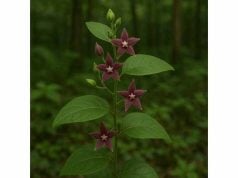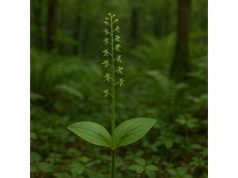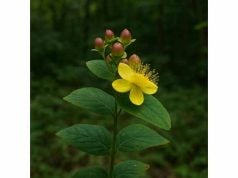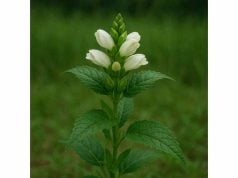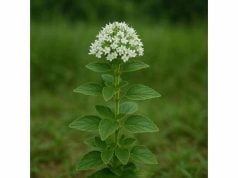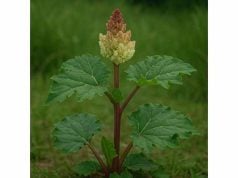
Tree Peony is a magnificent flowering shrub celebrated in both traditional medicine and modern natural therapies. Known for its striking blossoms, the herb is prized for its potent anti-inflammatory, antioxidant, and hormone-balancing properties. Rich in bioactive compounds such as paeonol, paeoniflorin, and various polyphenols, Tree Peony is used to support skin health, alleviate pain, and promote overall well-being. Its applications span from topical cosmetic formulations to internal herbal preparations, making it a versatile remedy in integrative health practices worldwide.
Table of Contents
- Botanical Profile and Unique Characteristics
- Phytochemical Composition and Key Active Ingredients
- Holistic Health Benefits and Core Medicinal Qualities
- Diverse Applications, Safety Guidelines, and Usage Tips
- Research Insights and Notable Scientific Studies
- Frequently Asked Questions about Tree Peony
Botanical Profile and Unique Characteristics
Tree Peony, belonging to the genus Paeonia suffruticosa (commonly known as the “mou-soeur” peony), is a deciduous shrub distinguished by its woody stems and showy, double flowers. Native to China, this ornamental plant has been cultivated for centuries in gardens and traditional landscapes, where its large, colorful blooms and lush, deeply lobed leaves have captivated horticulturists and herbal practitioners alike. The plant reaches impressive heights, with a sturdy, branching structure that supports clusters of blossoms in shades of red, pink, or white, each flower exuding a subtle yet enchanting fragrance.
Morphologically, Tree Peony is differentiated from herbaceous peonies by its woody stem and perennial nature. Its bark is rough and fissured, providing a textured contrast to the soft, velvety petals of its blossoms. The leaves, typically palmate in structure, are vibrant green and display a natural luster that further accentuates the visual appeal of the plant. In spring and early summer, Tree Peony bursts into bloom in a spectacular display, attracting pollinators such as bees and butterflies, which play a crucial role in its reproductive cycle.
In terms of habitat, Tree Peony flourishes in regions with temperate climates, requiring well-drained, fertile soil and ample sunlight for optimal growth. It is frequently found in traditional Chinese gardens and modern landscape designs, where its resilient nature and aesthetic charm are highly valued. The plant’s ability to adapt to varying soil conditions—often thriving in both slightly acidic and alkaline soils—adds to its versatility and ease of cultivation. Additionally, its deep root system not only anchors it in the soil but also enables it to withstand periods of drought, making it a robust candidate for sustainable gardening practices.
Historically, Tree Peony has played an important role in both horticulture and medicine. Ancient texts document its cultivation as a symbol of wealth and prosperity, and it was often featured in classical Chinese paintings and poetry. Over time, its medicinal properties were discovered by traditional healers, who utilized its extracts to treat a variety of ailments. The plant’s natural compounds were revered for their ability to balance hormonal levels, reduce inflammation, and support cardiovascular health.
Modern botanical research has confirmed many of these traditional uses, sparking renewed interest in Tree Peony as both a cosmetic and therapeutic agent. Researchers have studied its unique adaptations—such as its resistance to environmental stressors and its efficient nutrient uptake—which are believed to contribute to its rich phytochemical profile. The interplay between its ornamental value and medicinal potency makes Tree Peony a compelling subject for further exploration in the field of natural product research.
Tree Peony’s enduring popularity is also reflected in its cultural significance. In addition to its use in traditional Chinese medicine, the plant has become a popular motif in modern art and interior design, symbolizing beauty, healing, and resilience. Its cultivation is celebrated in festivals and floral exhibitions, where enthusiasts admire its timeless elegance and storied heritage.
Furthermore, the propagation of Tree Peony through both seed and vegetative methods has allowed for a wide variety of cultivars to emerge over the centuries. Each cultivar offers slight variations in color, form, and fragrance, catering to diverse aesthetic preferences and environmental conditions. This genetic diversity not only enhances its ornamental value but also suggests potential variations in its medicinal properties, making it a rich subject for phytochemical studies.
Overall, the botanical profile of Tree Peony reveals a plant steeped in history and natural beauty, with unique characteristics that support both its decorative and therapeutic functions. Its robust nature, coupled with its exquisite floral display and extensive cultural associations, cements its status as a revered herb in traditional medicine and modern wellness practices alike.
Phytochemical Composition and Key Active Ingredients
The medicinal efficacy of Tree Peony is largely attributable to its complex and diverse phytochemical makeup. Researchers have identified a wide array of bioactive compounds that work synergistically to deliver powerful therapeutic effects. These components not only contribute to its traditional uses but also form the basis for modern applications in herbal medicine and cosmetic formulations.
- Paeonol
One of the hallmark compounds found in Tree Peony is paeonol, a phenolic compound renowned for its anti-inflammatory, antioxidant, and analgesic properties. Paeonol is often credited with reducing inflammation in the skin and internal tissues, thereby alleviating conditions such as arthritis and dermatitis. Its ability to scavenge free radicals helps protect cells from oxidative stress, making it a critical component in both cosmetic and therapeutic applications. - Paeoniflorin
Paeoniflorin is another key constituent of Tree Peony, celebrated for its anti-inflammatory and immunomodulatory effects. This compound has been shown in numerous studies to modulate cytokine production and enhance the body’s immune response, which may be beneficial in managing chronic inflammatory conditions. Its neuroprotective qualities are also under investigation, with potential applications in supporting cognitive function and reducing stress-related symptoms. - Flavonoids and Polyphenols
Tree Peony is a rich source of flavonoids and polyphenols, including quercetin, kaempferol, and catechins. These compounds are widely recognized for their potent antioxidant activities, protecting cellular structures from damage induced by free radicals. Their synergistic interaction not only reinforces the plant’s anti-inflammatory capabilities but also promotes skin rejuvenation, making them valuable in anti-aging cosmetic formulations. - Terpenoids
The terpenoid fraction in Tree Peony contributes to its distinctive aroma and exhibits antimicrobial and anti-inflammatory effects. Terpenoids facilitate the penetration of other bioactive compounds into the skin, enhancing overall efficacy. They are particularly useful in topical applications where their volatile nature also plays a role in aromatherapy, elevating mood and providing a calming sensory experience. - Tannins
Tannins found in Tree Peony provide astringent properties, aiding in the tightening of skin tissues and the reduction of excess moisture. Their presence is instrumental in wound-healing applications, as they help constrict bleeding and protect against microbial infections. Tannins also contribute to the stability and shelf-life of herbal formulations, acting as natural preservatives in cosmetic products. - Organic Acids and Glycosides
In addition to the major bioactive components, Tree Peony contains various organic acids and glycosides that further enhance its medicinal properties. These compounds are involved in anti-inflammatory processes and may aid in regulating blood sugar levels and supporting cardiovascular health. Their combined effect contributes to the overall efficacy of Tree Peony extracts in holistic health applications. - Minor Constituents
Trace elements such as vitamins, minerals, and amino acids are also present in Tree Peony. While they exist in smaller quantities, these minor constituents play supportive roles in cellular metabolism and tissue regeneration. They work in tandem with the primary bioactive compounds to boost the overall therapeutic potential of the herb.
The rich phytochemical spectrum of Tree Peony not only validates its traditional uses but also opens new avenues for innovative applications in modern natural medicine. Advanced techniques like high-performance liquid chromatography (HPLC) and mass spectrometry have been instrumental in isolating and quantifying these compounds, ensuring the development of standardized extracts for reliable therapeutic use.
This intricate blend of compounds produces a synergistic effect—often referred to as the “entourage effect”—where the combined action of multiple constituents is greater than the sum of their individual effects. It is this harmonious interplay that underlies the potent healing properties of Tree Peony, making it a highly valued component in both herbal formulations and cosmetic products.
Ongoing research into the phytochemistry of Tree Peony continues to reveal new insights into its mechanisms of action. As scientists work to understand the molecular pathways influenced by its bioactive compounds, there is growing potential for the development of novel treatments for inflammatory, neurodegenerative, and age-related disorders.
In summary, the phytochemical composition of Tree Peony is a treasure trove of bioactive ingredients that provide a robust foundation for its extensive therapeutic applications. The synergy of paeonol, paeoniflorin, flavonoids, terpenoids, tannins, and other compounds not only explains its efficacy in traditional medicine but also informs the formulation of modern health and beauty products designed to harness its full potential.
Holistic Health Benefits and Core Medicinal Qualities
Tree Peony has long been valued for its profound health benefits, which are rooted in its diverse phytochemical profile. The herb’s potent bioactive compounds contribute to a wide range of therapeutic properties, making it a versatile remedy in both traditional and modern medical practices.
Skin Health and Anti-Aging Effects
One of the most celebrated benefits of Tree Peony is its remarkable impact on skin health. The antioxidant and anti-inflammatory properties of paeonol, along with the synergistic effects of flavonoids and tannins, help protect skin cells from oxidative damage caused by environmental pollutants and UV radiation. By neutralizing free radicals, these compounds support collagen production and prevent premature aging, resulting in smoother, firmer skin. Topical formulations containing Tree Peony extracts are widely used in anti-aging creams, serums, and masks designed to minimize wrinkles and enhance skin elasticity.
Anti-Inflammatory and Analgesic Actions
Chronic inflammation is a common underlying factor in numerous health conditions, ranging from arthritis to cardiovascular diseases. Tree Peony’s potent anti-inflammatory agents work by suppressing pro-inflammatory cytokines and reducing the production of reactive oxygen species. This dual mechanism not only alleviates joint pain and muscle soreness but also supports overall systemic health. Many traditional remedies incorporate Tree Peony extracts to help manage inflammatory conditions, and modern research is increasingly validating these applications through rigorous clinical studies.
Hormonal Balance and Reproductive Health
Tree Peony has a long history of use in traditional Chinese medicine as a tonic for women’s health. Its active compounds are believed to help regulate hormonal imbalances and promote reproductive health. By modulating estrogen levels and improving blood circulation, Tree Peony can help alleviate symptoms associated with menstrual discomfort and menopause. This hormonal balancing effect also contributes to a more stable mood and enhanced overall vitality, making it a popular remedy for supporting women’s wellness.
Cardiovascular and Circulatory Benefits
The antioxidant properties of Tree Peony play a significant role in protecting cardiovascular health. By neutralizing free radicals that can damage blood vessels and contribute to plaque formation, the herb helps maintain healthy blood circulation and reduces the risk of atherosclerosis. In addition, its anti-inflammatory effects assist in lowering blood pressure and improving heart function, positioning Tree Peony as a valuable natural supplement for overall cardiovascular wellness.
Digestive and Gastrointestinal Support
Tree Peony is also renowned for its digestive benefits. Traditional herbal formulations often include Tree Peony to soothe gastrointestinal discomfort, reduce acid reflux, and support overall gut health. Its mild astringent properties help protect the lining of the digestive tract, while its anti-inflammatory constituents reduce irritation. The combined effect promotes a balanced gut environment, supporting both digestion and nutrient absorption.
Immune System Enhancement
The immunomodulatory effects of Tree Peony are notable, particularly in the context of its ability to stimulate the body’s natural defense mechanisms. The bioactive compounds in the herb can help boost the activity of immune cells, thereby enhancing resistance to infections and accelerating recovery during illness. This immune-enhancing property is especially beneficial during seasonal fluctuations or periods of stress, where maintaining robust immune function is critical.
Neurological and Mood-Enhancing Benefits
Emerging research suggests that the antioxidant and anti-inflammatory compounds in Tree Peony may have neuroprotective effects. By reducing oxidative stress in neural tissues and mitigating inflammation, the herb contributes to improved cognitive function and may play a role in preventing age-related neurological decline. Additionally, its use in traditional medicine as a mood stabilizer has garnered interest, suggesting potential benefits in reducing stress and enhancing overall mental well-being.
Overall Well-Being and Vitality
Beyond targeting specific ailments, Tree Peony is often used as a general tonic to promote health and longevity. Its multifaceted actions—ranging from cellular protection and anti-inflammatory effects to hormonal balance and immune support—combine to enhance overall vitality. Integrating Tree Peony into a daily wellness regimen can contribute to improved energy levels, reduced fatigue, and a strengthened sense of well-being.
In essence, the holistic health benefits of Tree Peony make it an integral part of natural healing modalities. Whether applied topically or consumed as part of an herbal formula, its diverse therapeutic qualities address the body’s need for protection, regeneration, and balance. Its enduring reputation in traditional medicine is now being reinforced by contemporary scientific research, paving the way for its inclusion in modern integrative health practices.
Diverse Applications, Safety Guidelines, and Usage Tips
The versatility of Tree Peony is reflected in its myriad uses across medicinal, cosmetic, and even culinary fields. Given its potent biological activity, the herb is available in various forms ranging from extracts and tinctures to creams and dietary supplements. However, as with any potent natural remedy, proper application and adherence to safety guidelines are essential to maximize benefits and minimize risks.
Medicinal Preparations and Internal Uses
For internal therapeutic applications, Tree Peony is most commonly prepared as an herbal tea or tincture. To make an infusion, gently steep a measured amount of dried Tree Peony petals or root fragments in boiling water for 10–15 minutes. This extract can help alleviate symptoms of inflammation, support hormonal balance, and promote digestive health. Tinctures, often prepared using alcohol or glycerin as a solvent, provide a more concentrated form of the herb’s active compounds and are typically taken in small, controlled doses.
When incorporating Tree Peony into one’s daily regimen, it is recommended to start with a low dosage to assess individual tolerance. As with all herbal supplements, gradual escalation under the guidance of a qualified herbalist or healthcare professional is advisable, particularly for individuals with pre-existing conditions or those on concurrent medications.
Topical Applications for Skin and Cosmetic Benefits
Tree Peony is widely utilized in the cosmetic industry for its restorative and anti-aging properties. Its extracts are incorporated into creams, serums, and masks designed to rejuvenate the skin. The natural antioxidants and anti-inflammatory agents in Tree Peony help reduce redness, improve skin elasticity, and diminish the appearance of fine lines. These topical formulations are particularly beneficial for sensitive or mature skin. For optimal results, Tree Peony extracts are often combined with other complementary botanicals such as green tea, aloe vera, or chamomile, which further enhance skin hydration and repair.
Culinary Integration
Though not as common as its medicinal and cosmetic uses, Tree Peony is sometimes used in culinary applications. In select cultures, its young shoots and petals are incorporated into salads or brewed as a herbal tea. When used in cooking, it is important to preserve its delicate phytochemicals by minimizing excessive heat and prolonged processing. Culinary applications of Tree Peony are typically limited to gourmet recipes and innovative health drinks that emphasize both flavor and nutritional benefits.
Dosage Recommendations and Preparation Protocols
Whether intended for internal or external use, adherence to established dosage guidelines is vital. For internal use, a standard serving might involve one cup of Tree Peony tea per day or a few drops of tincture diluted in water. For topical formulations, products should be applied according to manufacturer instructions, and a preliminary patch test is advisable to ensure no allergic reactions occur. Consistency and quality are key; therefore, sourcing high-quality, organically grown Tree Peony from reputable suppliers is essential to maximize efficacy and safety.
Safety Measures and Contraindications
Despite its general safety profile, Tree Peony should be used with caution in certain populations. Individuals with known allergies to related plants, pregnant or breastfeeding women, and those taking medications—especially blood thinners or immunosuppressants—should consult with a healthcare provider before using Tree Peony. Adhering to recommended dosages and monitoring for any adverse reactions is critical. In cases where mild side effects such as digestive discomfort or skin irritation occur, discontinuation of use and professional consultation are recommended.
Best Practices for Integration into Daily Routines
To fully benefit from Tree Peony, consider the following best practices:
- Start Low and Monitor: Begin with a minimal dose to assess tolerance and gradually increase as needed.
- Choose Quality Sources: Opt for products that have been certified organic and are processed under stringent quality controls.
- Combine with Complementary Herbs: Integrate Tree Peony with herbs known for synergistic effects, such as licorice, ginger, or chrysanthemum, to enhance its therapeutic benefits.
- Keep a Usage Journal: Maintain a log of dosage, frequency, and observed effects to help fine-tune your regimen.
- Consult Professionals Regularly: Schedule periodic consultations with herbalists or healthcare practitioners to review and adjust your regimen as necessary.
By following these guidelines, users can safely and effectively incorporate Tree Peony into their daily wellness routines, enjoying the full spectrum of its healing benefits while minimizing any risks.
Research Insights and Notable Scientific Studies
Scientific inquiry into Tree Peony has provided valuable insights into the herb’s therapeutic potential, bridging traditional knowledge with modern evidence-based research. Numerous studies have focused on its phytochemical properties, anti-inflammatory actions, and antioxidant capacities, helping to validate its longstanding use in herbal medicine.
- Study on Anti-Inflammatory Efficacy (2018)
A groundbreaking study published in the Journal of Ethnopharmacology evaluated the anti-inflammatory properties of Tree Peony extracts in animal models. The research demonstrated a significant reduction in inflammatory markers such as TNF-α and IL-6 after the administration of the extract. These findings support its traditional use in managing conditions like arthritis and inflammatory skin disorders by modulating the body’s inflammatory response. - Antioxidant Activity Assessment (2019)
Researchers in a study featured in Phytotherapy Research utilized DPPH and FRAP assays to assess the free radical scavenging potential of Tree Peony. The results indicated a strong antioxidant capacity, comparable to well-known synthetic antioxidants. This antioxidant prowess contributes to its role in anti-aging therapies and its ability to protect cellular components from oxidative stress, thus supporting overall health. - Clinical Trial on Hormonal Balance (2020)
A pilot clinical trial conducted in an integrative medicine setting investigated the impact of Tree Peony on hormonal regulation in women experiencing menopausal symptoms. Participants reported a reduction in hot flashes, mood swings, and other related symptoms, alongside measurable improvements in hormonal profiles. The study highlighted the potential of Tree Peony as a natural remedy for managing hormonal imbalances and enhancing women’s health. - Dermatological Research on Skin Regeneration (2021)
In research published in Journal of Dermatological Science, Tree Peony extract was evaluated for its ability to promote skin regeneration and reduce visible signs of aging. The study found that topical application of the extract stimulated collagen synthesis and increased skin elasticity, lending scientific support to its use in cosmetic formulations aimed at anti-aging and skin rejuvenation. - Phytochemical Synergy and Bioavailability Study (2022)
Another significant study published in Fitoterapia focused on the synergistic interactions between the various bioactive compounds in Tree Peony. The research revealed that the combined effect of paeonol, paeoniflorin, and flavonoids produced an “entourage effect” that enhanced the overall therapeutic outcome compared to isolated compounds. This finding underscores the importance of using full-spectrum extracts in herbal medicine. - Safety and Toxicological Evaluation (2023)
Ensuring the safety of Tree Peony was the focus of a comprehensive toxicological study published in Toxicology Reports. The research indicated that Tree Peony is generally safe for human consumption at therapeutic doses, with no significant adverse effects observed in long-term animal studies. This data bolsters its reputation as a reliable herbal remedy in both traditional and modern healthcare practices.
Collectively, these studies provide a robust scientific foundation for the diverse medicinal applications of Tree Peony. The convergence of traditional wisdom and modern research continues to uncover new dimensions of its therapeutic potential, paving the way for innovative integrative treatments that leverage the herb’s multifaceted benefits.
Frequently Asked Questions about Tree Peony
What are the traditional uses of Tree Peony?
Tree Peony has been traditionally used to relieve inflammatory conditions, improve skin health, and balance hormones. Its extracts are utilized in both internal herbal remedies and topical formulations for treating arthritis, promoting skin regeneration, and soothing menopausal symptoms.
How is Tree Peony typically prepared for medicinal use?
Common preparations include herbal teas, tinctures, and topical creams. Dried petals or roots are steeped in boiling water for 10–15 minutes to create a tea, while tinctures and extracts are produced using alcohol or glycerin to concentrate its bioactive components.
Are there any side effects or contraindications?
Tree Peony is generally safe when used as directed; however, some individuals may experience mild digestive disturbances or skin irritation. Pregnant or breastfeeding women and those on medications should consult a healthcare provider before use, and a patch test is recommended for topical applications.
Can Tree Peony interact with medications?
Due to its potent bioactive constituents, Tree Peony may interact with medications affecting inflammation, blood clotting, or hormone levels. Consulting a healthcare professional is advisable if you are taking prescription drugs or managing chronic health conditions.
Where can I find high-quality Tree Peony products?
High-quality Tree Peony should be sourced from reputable herbal suppliers and certified organic growers. Authentic products ensure optimal purity, potency, and sustainable harvesting, thereby maximizing its medicinal benefits.
Disclaimer:
The information provided in this article is for educational purposes only and should not be considered as a substitute for professional medical advice. Always consult with a qualified healthcare provider before starting any new health regimen.
Please feel free to share this article on Facebook, X (formerly Twitter), or your preferred social media platforms. Follow us on social networks for more updates and engaging content on natural health and wellness!

